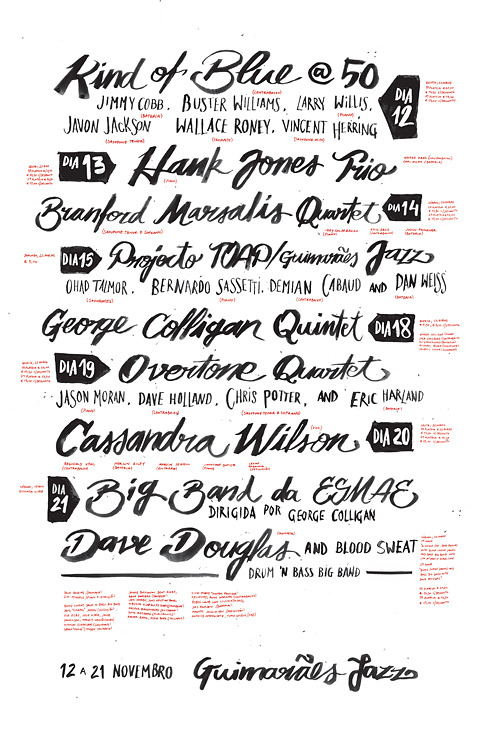- Different styles of typeface communicate different messages
- The typeface is the character/ tone of voice of the content being communicated. This is called meta-communication.
- Paralinguistics= The study of vocal signals beyond the basic message, this could include pitch, loudness, speed etc. all of which can be communicated through different typefaces.
- Kinesics= the study o body movements and gestures as a form of communication.
Types of Type
- Humanist
- based on human proportions
- sloping cross bar on 'e'
- small 'x' height

- Old Style
- Wedge shaped serifs
- upright stress
- horizontal cross bar
- Transitional
- Vertical stres on letters
- more contrast on thick and thin strokes
- Modern
- Even more contrast between stroke thickness
- Vertical axis
- horizontal stress
- small aperture
- Slab Serif
- Big, blocky serifs
- typewriter types
- Sans Serif
- no serifs
- helvetica
Other classifications of type:
Stone
Type carved into stone, usually has serifs as this is where the chisel enters.
Sable-brush scripts
Sable allows for a more fluid and delicate typeface

Bone
Bone can be used to craft nibs of pens which results in type similar to that of sabre but with not as much fluidity.
Wood
Using wood as a way of printing dates back to 220 AD, Using wood creates very solid and level blocks of type of varying point sizes.
Lead
Gutenberg invented movable type in 1450, using lead to create glyphs.
Silicon
The applications of digital technology allows for type to be made out of silicon and cut using machines, which enables larger font families to be created with ease.
Timeline of Modern Typography
garamond
Caslon
Bodoni
Gill Sans
Univers
2000+
Links to further reading:


No comments:
Post a Comment